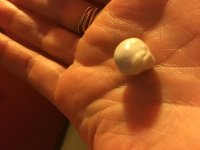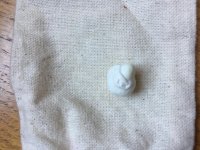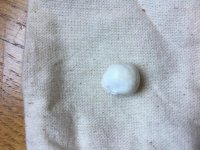Hello mazelle,
You have an unusual find. Pearls from crustaceans are considered rare, but not uncommon. Although crabs and oysters share the same spaces in the environment, they're not similar in any way.
Molluskan pearls are formed from aragonite and calcite within a protein matrix. Crustacean pearls are formed from chitinous material that make up the exoskeletons of arthropods and some plants. Crab shells are essentially skin and as such, is subject to damage as any other species. In mollusks, parasites, shell damage and debris may cause pearls, where in crabs pearls may be spontaneous or from attacks from other crabs. Crab pincers tend to be pin-point precise and may cause a tiny portion of shell material to become deeply lodged in sub-surface layers or membranes. These layers form new exoskeletons which will become hardened when exposed following seasonal molts.
Pearls of any origin cannot be polished without damage to the outer surfaces. Wearing pearls tends to assist them in maintaining some luster by contacting body oils.
Your pearl has become hollow, which stands to reason. After all, they're not comprised of a consecutive succession of concentric layers, but a single layer. It would be advised to fill or line the space with a self hardening resin to increase it's strength and durability and then attach an appropriate bale and ring to support a chain or string.
You have an exceptional find and a rare experience, thank you for showing us.



